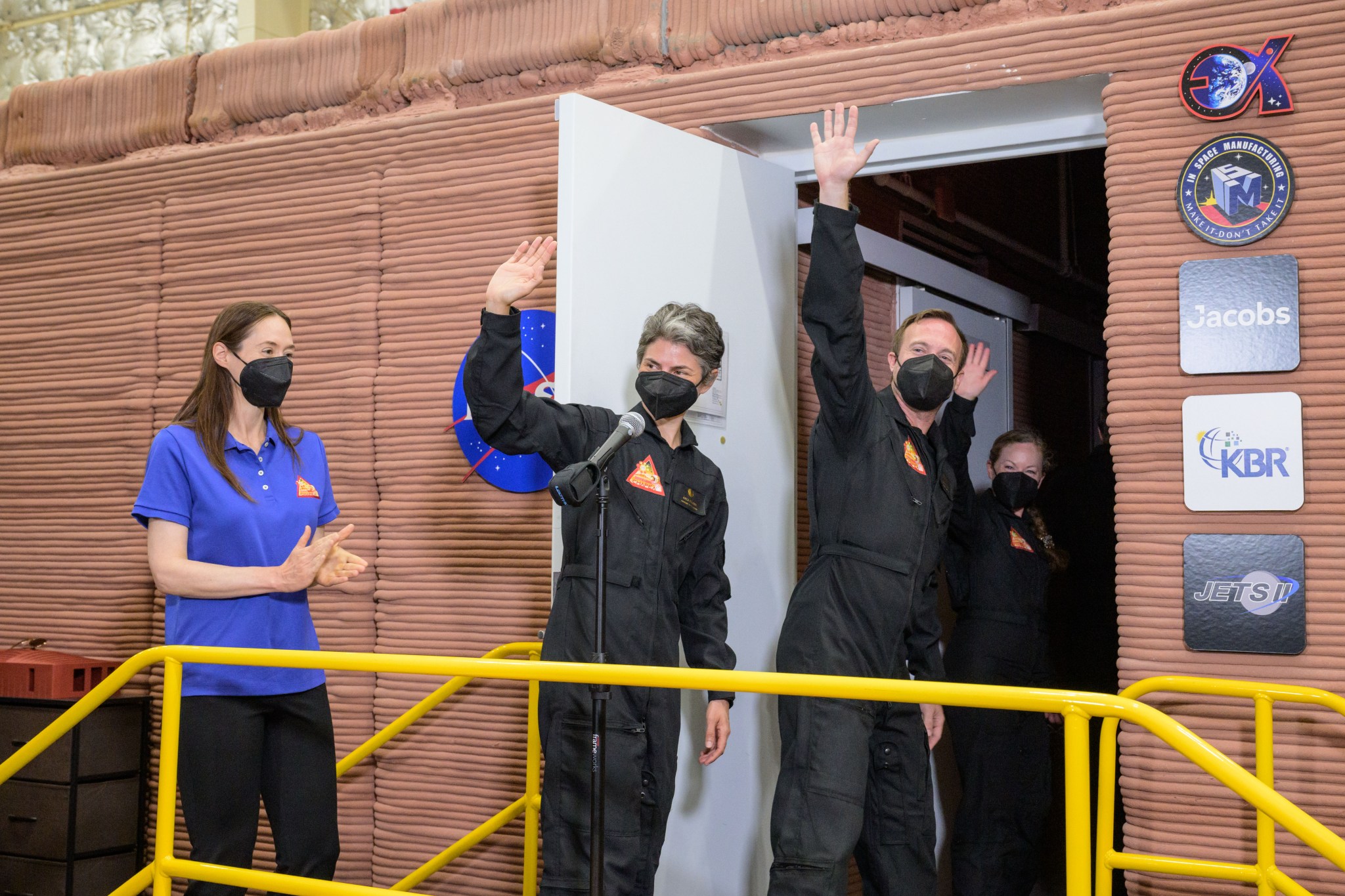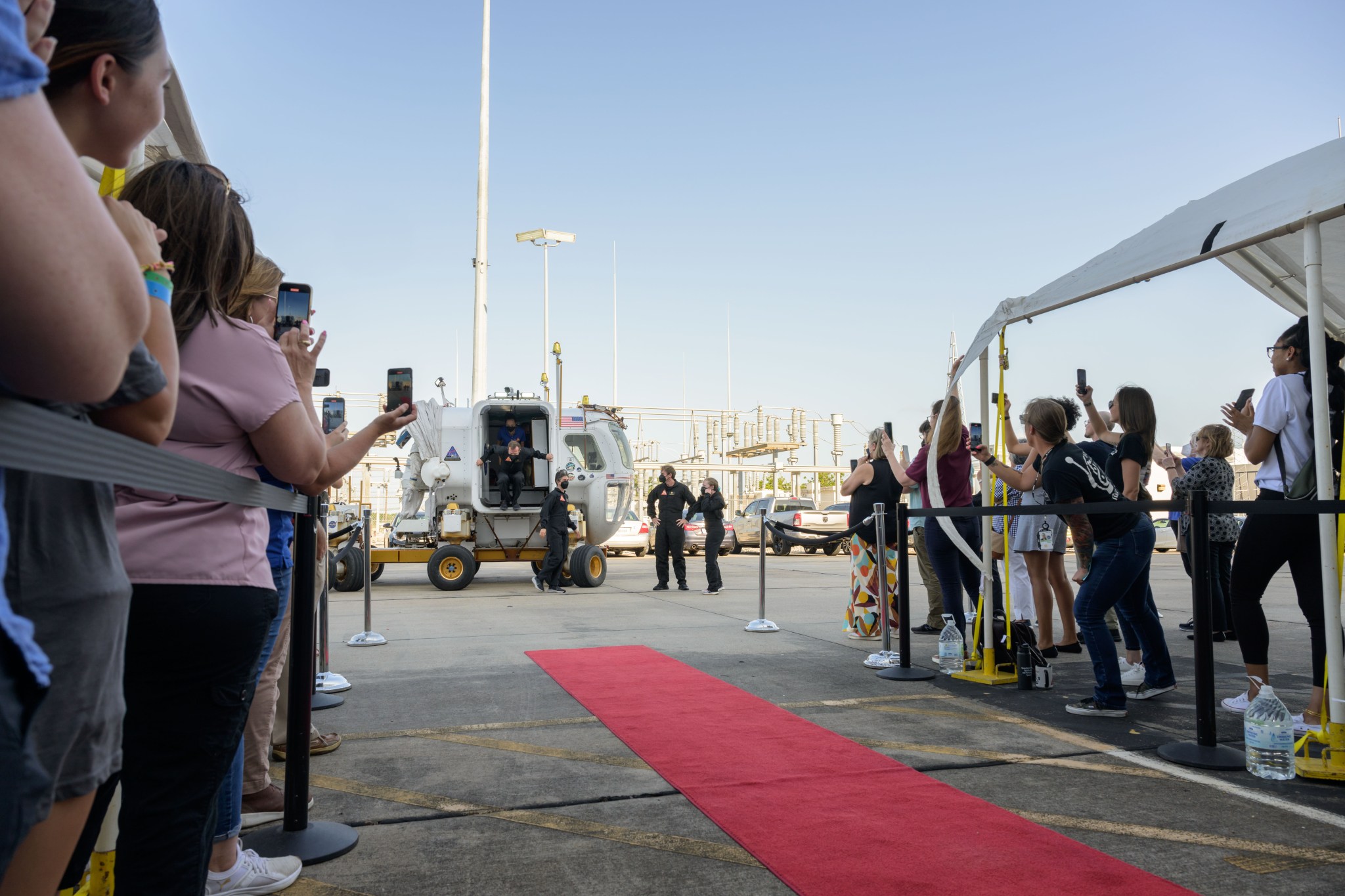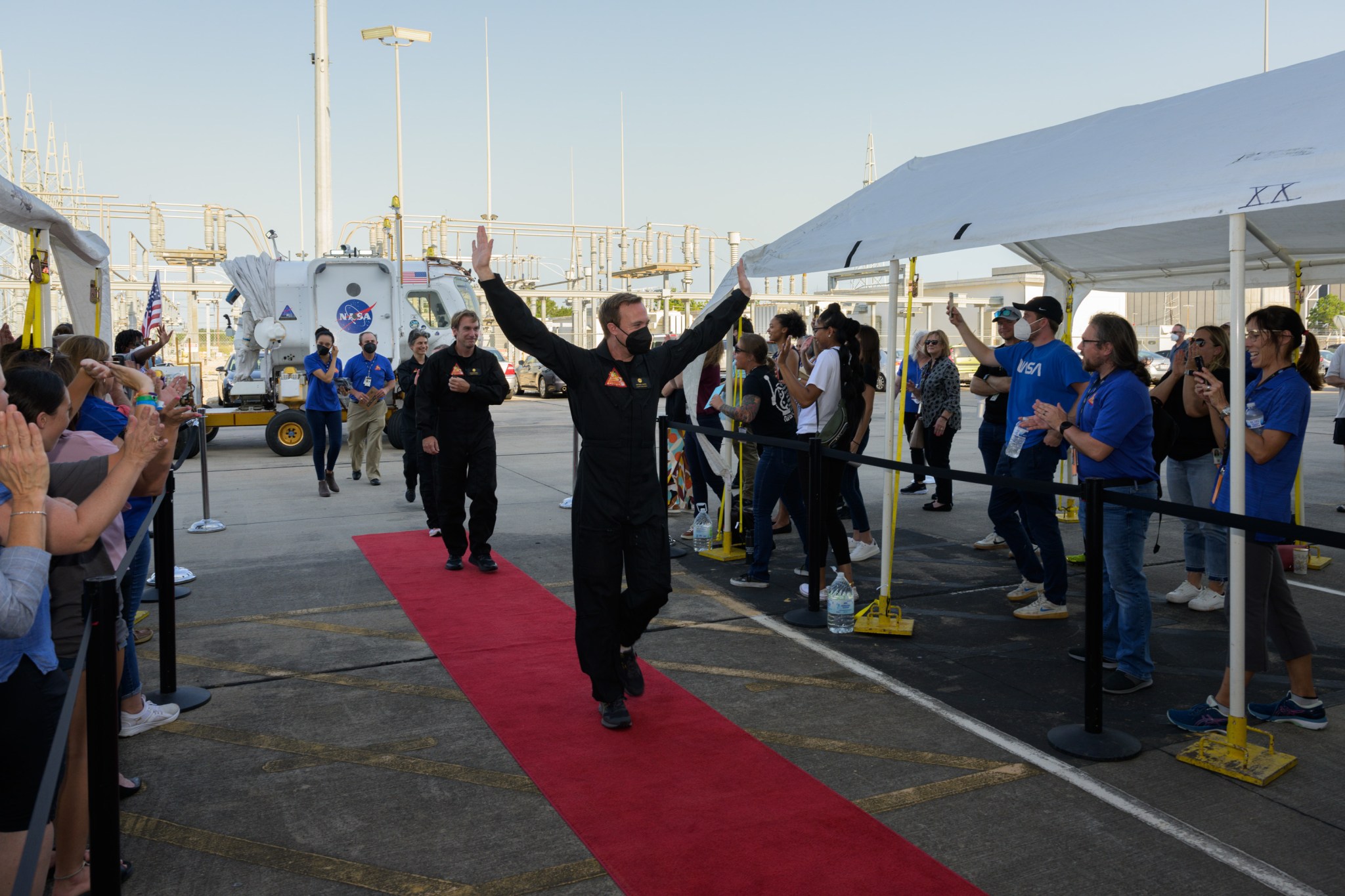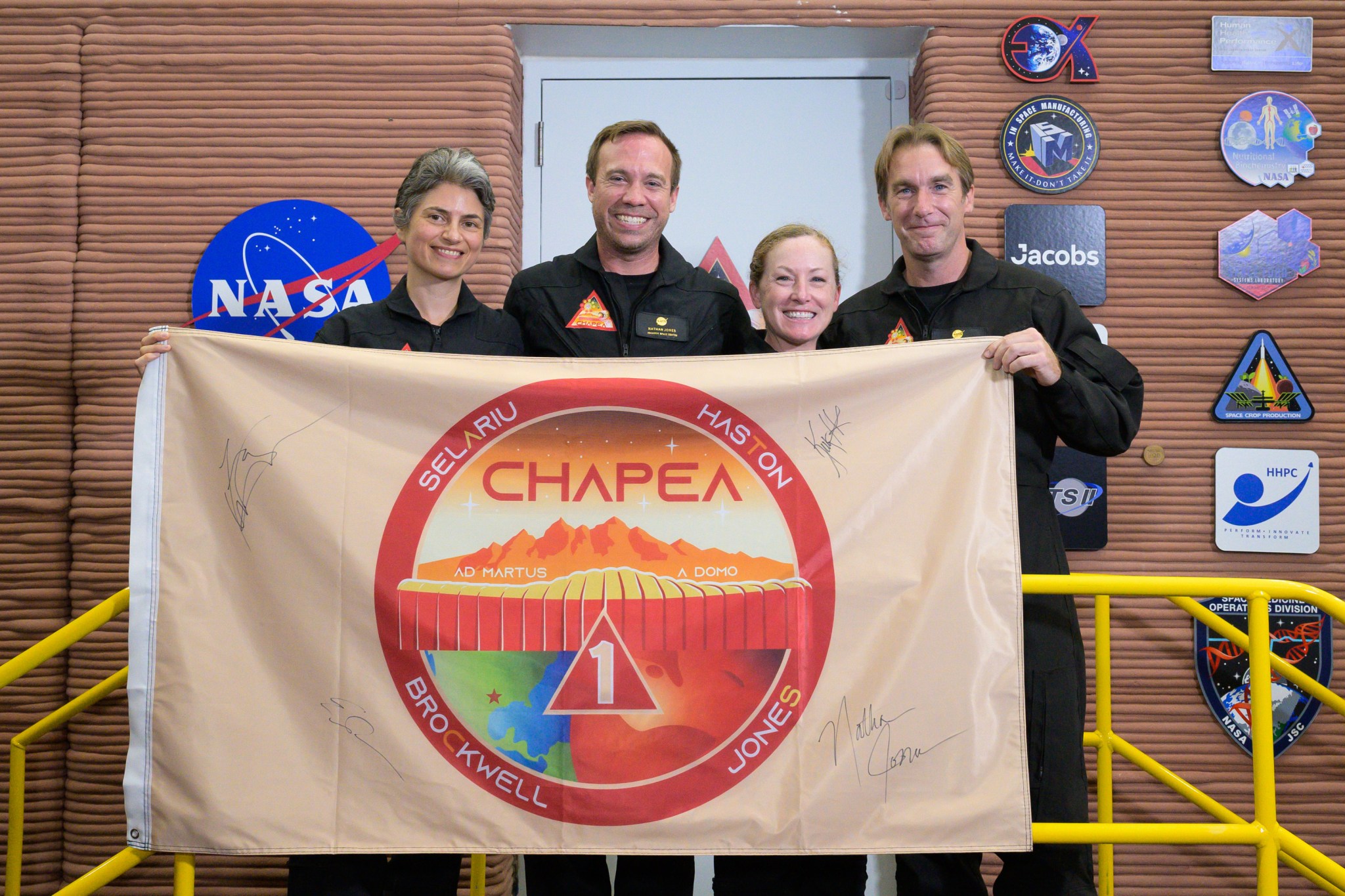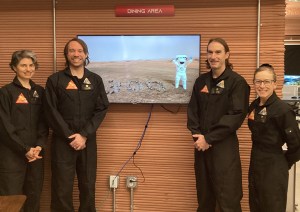The inaugural CHAPEA, or Crew Health and Performance Exploration Analog, mission began Sunday, June 25, when the four-person volunteer crew entered its new home at NASA’s Johnson Space Center in Houston to begin a 378-day Mars surface simulation.
This is the first of three planned missions. NASA will use research gained from CHAPEA to determine how to best support crew health and performance while living on Mars during a long-duration exploration mission.
During the CHAPEA simulations, crew members will carry out different types of mission activities, including simulated spacewalks, robotic operations, habitat maintenance, personal hygiene, exercise, and crop growth. To be as Mars-realistic as feasible, the crew also will face environmental stressors such as resource limitations, isolation, and equipment failure.
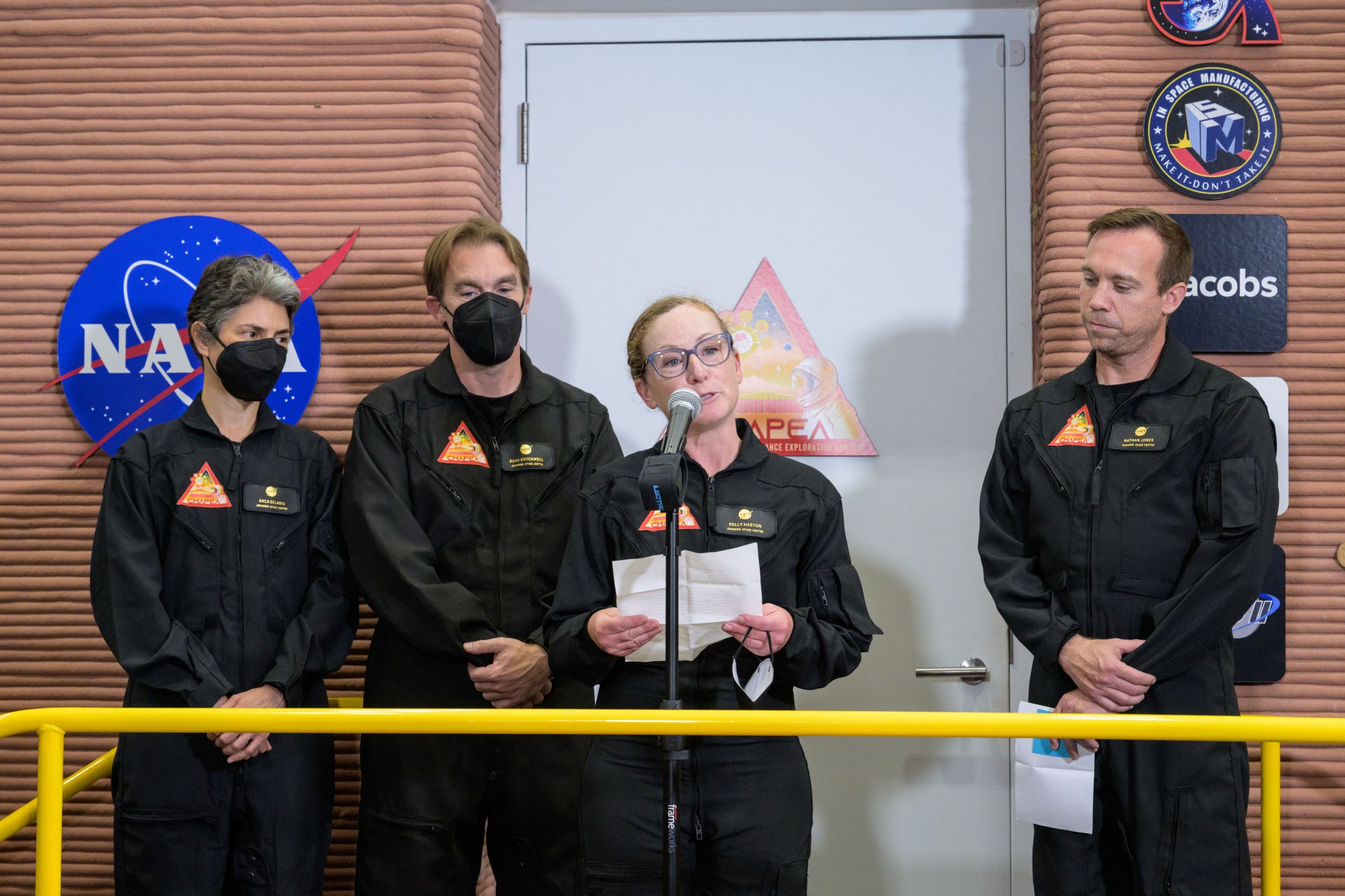
NASA is leading a return to the Moon for long-term science and exploration. Through Artemis missions, NASA will land the first woman and first person of color on the Moon, using innovative technologies to explore more of the lunar surface than ever before. Lessons learned on and around the Moon and activities like CHAPEA on the ground will prepare NASA for the next giant leap: sending astronauts to Mars.
























